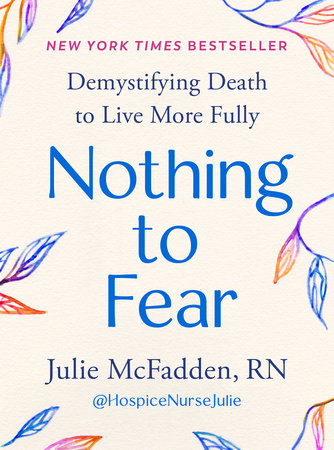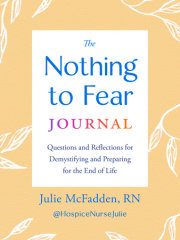Before I became a hospice nurse, I worked in the intensive care unit (ICU). In the ICU, doctors and nurses are doing everything possible to keep people alive, and their incredible work saves thousands of lives every year. But we rarely discuss the end of life until it's too late.
People often ask me why I decided to become a hospice nurse. This story is why. I had an ICU patient named Scott who had just had major surgery that was meant to help his advanced-stage pancreatic cancer. I had seen many people get surgeries like Scott's to help extend their lives, and it often worked. In the best cases, successful surgery can add years to a patient's prognosis.
In Scott's case, things went well at first, but after five days, he developed a bilateral pulmonary embolism, which is a blood clot that goes into the lungs and stops blood flow. The only reason he didn't die from this immediately was that he was already in the hospital. Because of this incident, he came back to the ICU.
Scott was intubated, which means he was hooked up to a machine to help him breathe. As time went on, he would seem to be getting better and even could walk around on his own, but inevitably something bad would happen again. He would be doing really well and then get a blood infection or pneumonia. We just could not get him better.
For months, Scott was basically in and out of consciousness. He was on medication to keep his blood pressure normal, and because of the high doses of these meds, his toes turned black. This is called necrosis, and it means the tissue is literally dying. So even if Scott recovered enough to leave the ICU, he would need to have his toes amputated.
Here's the thing: in the ICU, it's all risk versus benefit. We were trying to keep his vitals up no matter what, and sometimes that meant sacrificing comfort and, yes, toes. In the ICU, you have a job to do, and that job is to keep a patient alive at all costs.
As nurses, we were just doing our job. We stayed focused on the numbers that showed how well his kidneys were functioning, how well his liver was functioning, how well his lungs were functioning. We watched these numbers to see which were trending up and which were trending down.
We focused on these minuscule things and reported them to Scott's family, but they had no idea what we were talking about. We would smile and tell them the "creatinine numbers" looked good, but we knew that meant only his kidneys were getting better. However, this information would lead Scott's family to think that eventually everything was going to be better and maybe he would go home one day. But he was still going to die from the cancer, and that wasn't going to change, regardless of how healthy his kidneys became.
This is what we were taught to do in the ICU, and I had become used to situations like this. Our medical team would focus on treating the person, but we were missing the forest for the trees. For a long time, I didn't give this much thought-but watching Scott, I started to think that maybe we had blinders on.
Scott was in the ICU for months. I had developed a good rapport with Scott's family. His wife was always by his side, and she was often anxious and worried. I cared deeply about him and his family. I wanted to speak up, but I was afraid. It was unheard of to have end-of-life discussions with ICU patients and their families. After all, we were supposed to be trying to get them better. But after seeing how much families were suffering, I became convinced we were doing them a disservice. We weren't being honest with them about their loved ones.
One day I finally thought, "Enough is enough." I had seen this pattern in too many patients. I decided to say something during rounds-the daily meetings during which a patient's medical team discusses the patient's care. The head doctor, fellows, residents, medical students, nurses, and patient's family would all be there. I wanted to keep my statements pretty general because I didn't think anyone had told Scott's wife yet that he was dying. We knew he wasn't going to get any better, but no one at the hospital would say it.
At rounds, I finally said, "I think we need to have a family meeting to address the bigger picture."
Right away, I knew I had said what everyone had been thinking but couldn't find the words for.
"Yes," everyone agreed, "that's what we need to do."
For the first time in a long time, I felt like I had done something good. I had spoken up and advocated for a patient and their family. It immediately felt right.
That same day, the medical team and the family met with a social worker. The family was given all the facts. Scott had terminal pancreatic cancer. Necrosis had spread to his extremities. Scott was dying. That was the medical reality. But there was another reality, too-the reality that the family had the power to decide how Scott died. They knew him best. They knew how he had lived, and they could give him the gift of a peaceful death if they wished to. With these facts in hand, the family met in private. They decided to remove Scott from the machines that were prolonging his life, and he died later that evening.
Scott's death affected me deeply. It felt strange to advocate for someone's death, even though I knew it was the right thing to do. I felt deeply saddened but empowered at the same time. That was the hardest part. As an ICU nurse, I was committed to treating patients, but something else inside me knew that sometimes it was better to look at the bigger picture. I knew it wasn't right that we kept people in the dark about what was really happening to them. They needed more information, but no one in the ICU was providing it.
People have an incredible capacity for love and compassion. But they need the correct information in order to know when compassion is a better choice than treatment. When we finally did share that information with Scott's family, they finally felt empowered to help Scott die peacefully.
This experience convinced me that, to paraphrase author and podcaster Glennon Doyle, I could do hard things. Speaking up that first time opened up a new world to me, one where I had a voice and could advocate for patients and their families. It convinced me that I could make a difference, even if the end result was the patient dying. I knew in my gut it was the right thing to do, and it gave the family the power to do what they thought was best for their loved one.
I love these patients deeply. I'll never forget them or their families. Speaking up for Scott allowed him to die peacefully, and it profoundly changed the trajectory of my career and my life.
Copyright © 2024 by Julie McFadden, RN. All rights reserved. No part of this excerpt may be reproduced or reprinted without permission in writing from the publisher.







